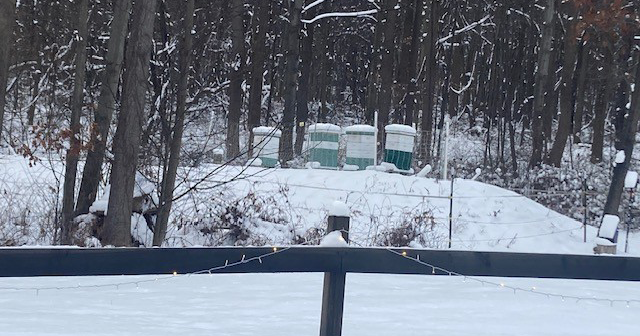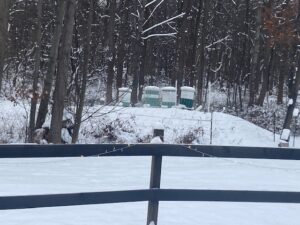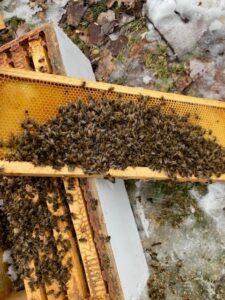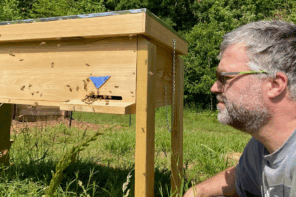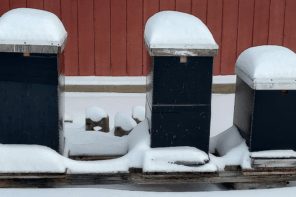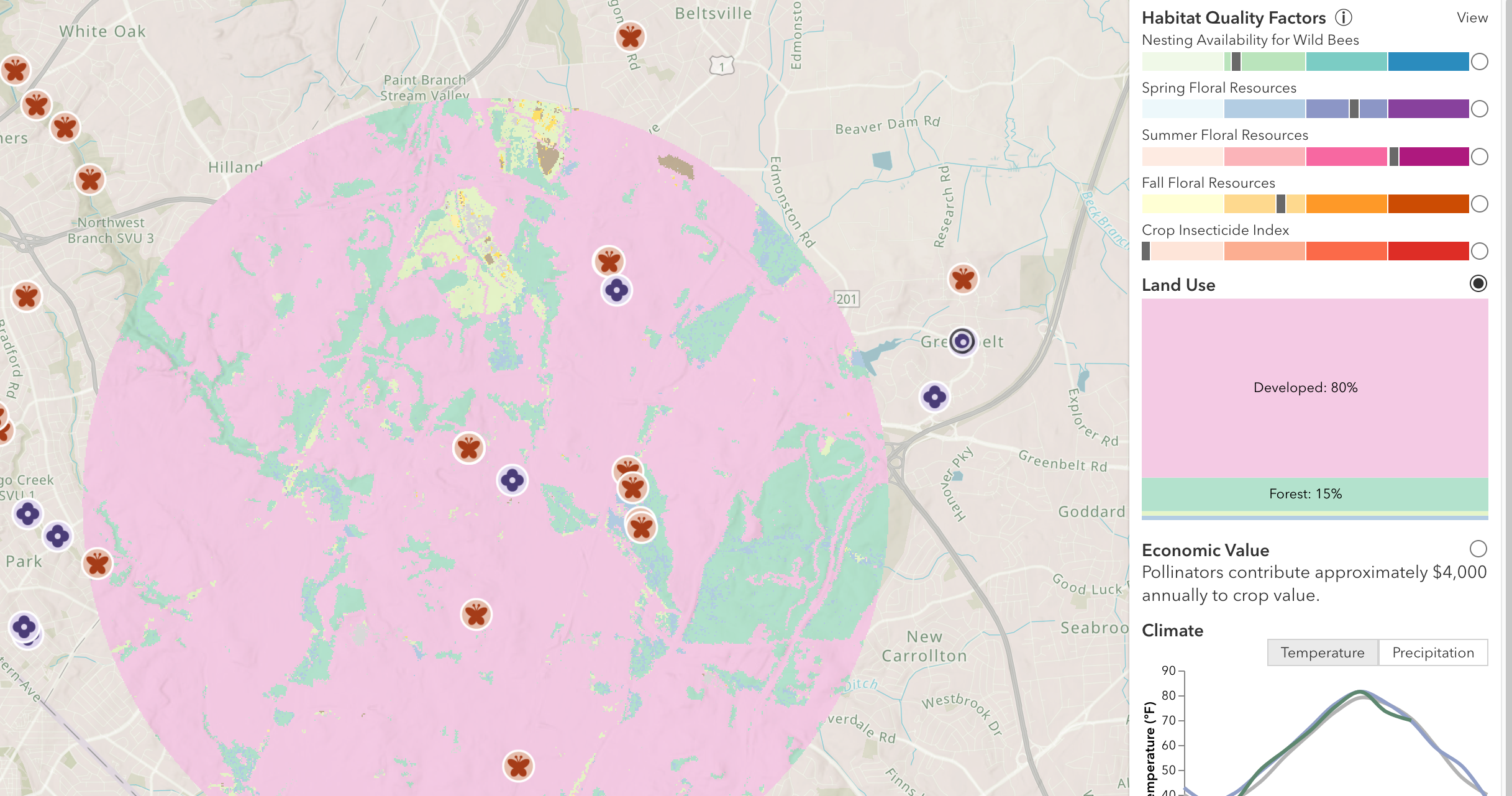Click Here if you watched/listened. We’d love to know what you think. There is even a spot for feedback!
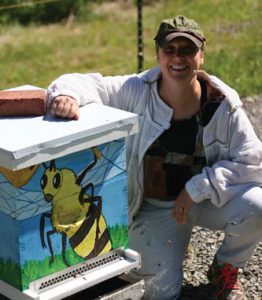
More SOAPing
By: Tracy Farone
In the June 2025 episode of Bee Vet, I introduced readers to the concept of “SOAPing”. To refresh your memory, here is a review. The acronym “SOAP” is used in medicine when working up and writing up a case. S= Subjective information, O=Objective Information, A=Assessment, and P=Plan.
S: Subjective information provides background and contextual information, a short “history” related to the case.
O: Objective information involves all the hard facts of a hive exam, and any clinical signs of disease (or not) noted during the exam.
A: Assessments include possible diagnosis/es, causes, prognosis, and identification of biosecurity and/or public health concerns.
P: The plan includes treatments, actions, preventions, and/or future diagnostics to address the situation.
This month I will share another SOAP case study. This situation resulted in 2 of my 3 overwinter hive losses this past year, so I am familiar with the problem. This case is a common occurrence that many beekeepers may have experienced but are unsure of the possible cause/s and may go mis-diagnosed. See if you can follow along with the SOAP presentation and go through the thought process with me. I am writing up this case study in August and by the time you read it will be October, which is the perfect time to be thinking about what you should be doing now to prevent overwinter hive loss.
The Case Study
S: Pennsylvania. January 2025.
Two days after a prolonged cold spell with temperatures below zero and windchills negative 30 below+. Winter weather has been up and down, cold one week, mild the next. Patient presented as a strong colony as early as a week before the cold snap, now found dead.
Beekeeper routinely tests for mites during the season and uses a combination of mite treatments including Apivar strips over Summer and OA vaporization in Fall. Mite levels have been successfully managed. Hive samples have tested positive for DWV previously.
O: Dead out, all bees dead. 10 frame, 1 deep and 2 mediums. Colony placement is on the outer edge of the other hives within the apiary. Ample honey/pollen stores found elsewhere in hive. Pink insulation in top of the hive cover, upper entrance open. Many clustered dead bees are found with heads buried into the cells against plastic foundation, some bees dead on the bottom board. No brood present. No mummies. All other hives of equivalent size and management present in the apiary appear to be alive and stable.
A: Possible diagnosis could include starvation, freezing, varroa mites, viruses, or a combination of such.
When considering a diagnosis, it is never wrong to deem that all of these factors may have played a partial role in the colony’s demise. But what is most important is to determine the primary cause of death. With other similar managed and sized hives to compare to in this apiary, this makes the primary cause of death easier to conclude. So, let us consider the most likely options listed.
Varroa: Possible contributor but it was managed by the beekeeper with a good year-over-year record for control and overwintering success. All hives in the apiary had a similar stressor.
Viruses: Possible contributor but all hives in the apiary tested positive and had a similar stressor.
Starvation: While many may jump to the conclusion that this is a classic starvation look to a hive… that may not entirely be the case…
I had the privilege of speaking at the West Virginia Beekeeping Association’s Spring Conference this year and amongst the speakers was Dr. David Tarpy, who presented information about hive loss diagnosis. (Always good to learn something new, even when you are supposed to be the teacher!) He discussed that the assumed starving position (dead bees with butts hanging out of the comb) may really be due to fluctuating Winter temperatures disrupting consistent cluster formation and efficiency, which then, if followed by a quick extreme cold spell, bees will quickly move as deep as possible into the nearest cells for heat, not necessarily food. However, in extreme cold, they may not be able to generate enough heat, get close enough, for long enough to avoid freezing, as a primary cause of death. Colonies with this condition are commonly strong prior to the cold snap and have ample stores within the hive.
This case description fits two of my hive losses over Winter in two different apiaries, after two separate extreme cold spells. Interestingly, both hives lost were the outer most hives (most exposed) in my apiaries.
So, freezing after extreme weather is the most likely primary cause of death in this case.
P: Clean up hive/hive equipment. Additional infectious disease spread is of low concern here, (all colonies already have the same exposures), so it is ok to re-use stores/comb in other hives. In the future, consider wind block/additional insulation, and closing upper entrances during extreme cold snaps for the area. Reconsider plastic foundation use. Consider moving South.
While “Winter” does not kill bees alone, during extreme rare weather, it can be the deciding factor. It really does come down to the luck of farming, some years are better than others. But with about a 20% loss, I have to make a management decision as to what may or may not be worth adopting in the future. Simply closing the upper entrances during extreme cold snaps would be a simple management change and experiment moving forward.







